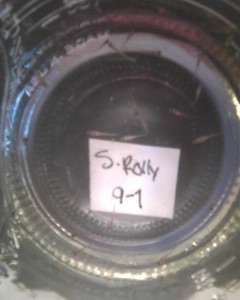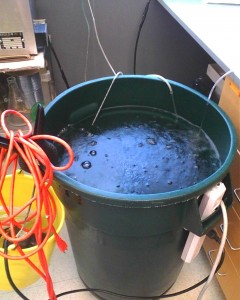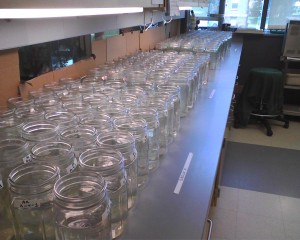Last day of testing!
Today marks the last day of feeding performance tests for the Alaskan fry! As of today, the 9 stickleback populations have each been tested 3 times. The last group that we received back in early June, consisting of the Willow, Lynne, and South Rolly populations, were the subjects of our feeding tests today. The embryos were sent from Alaska on June 10, and we got them here at Clark promptly on June 11. From there, we separated them into petri dishes of about 35 embryos each, and anxiously awaited their hatching. They hatched on June 17 (give or take a day or two, as they all didn’t hatch on exactly the same day), and began feeding on June 20. On June 22, we did the first feeding tests, in which 5 fry randomly selected from 5 fish families were observed eating brine shrimp for two consecutive 15 second trials. We then tested them again on June 29, and for the last time today, on July 6. It has been amazing to see the immense growth and development that has occurred over the last 20 or so days! They’ve gone from tiny little tadpole-looking creatures, to much larger, much more fish-like looking animals.

Under the microscope, we can now see fairly developed fins, much larger bodies, and bulging eyes that help them to eat the brine shrimp more and more quickly. At the start, many fish were very apprehensive, and would consume only a few shrimp over the two 15 second testing periods. However, today, some were eating upwards of 25 shrimp in the 30 second period! Though some are still a bit hesitant at first, once they start feeding, they don’t look back. Some even eat two brine shrimp at once!
To keep up with the quick growth of these little guys, we have had to make accommodations in the lab. Since the fry are now fed twice a day, this includes making about double the amount of brine shrimp as we were in the beginning. Also, now that they have been moved from petri dishes to quart jars that require water changes every other day, we now have to prepare much more embryo medium (a mixture of water and “instant ocean” salt), now held in a (clean) trash can. This has been made easier by the addition of a water pump, which has made frequent water changes much more manageable and less messy!

Though I enjoy observing the fish in the jars, I much prefer watching them under the microscope. Even though fish from the same family have the same two parents, are of identical age, and have been raised in identical environments, their behavior varies greatly. This is most evident in their techniques that they seem to have developed in terms of feeding. When we test them, and move them from their jars into small petri dishes, their reactions are very different across the board. Some adjust right away, swimming around calmly as if they’re patiently waiting for the food to be dropped in, while others dart around frantically from side to side. Others seem mesmerized by their reflections in the side of the dishes, and remain staring at themselves even after the brine shrimp have been added. My favorite to watch are the fish that stare at their reflections, but once they see the reflection of the shrimp behind them, they start gobbling them up immediately. I also enjoy watching the fish who try to eat shrimp but can’t quite get them fully in their mouths to swallow, yet still try to eat more simultaneously. Overall, they have been so interesting to watch.

From here, fry will go in many different directions and will be a part of various different experiments and projects. Many of them will become part of Miguel’s projects. Others may eventually be involved in studies focused on life history traits, body size and shape, or other behavioral projects. Though they have come a long way from their embryonic stage all the way in Alaska to their current stage of fry at Clark, their journey has only just begun!